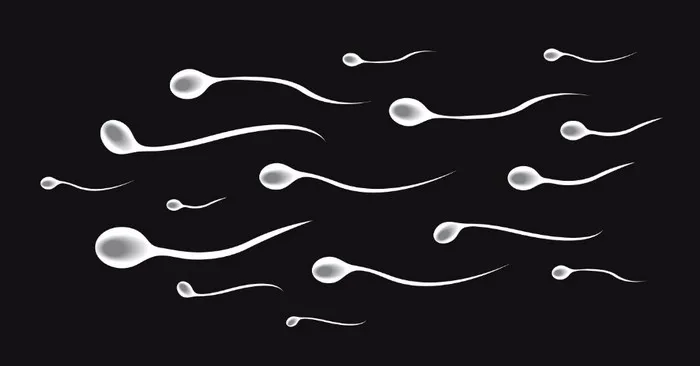Asthenozoospermia, often referred to as asthenospermia, is a condition characterized by reduced sperm motility, meaning the sperm’s ability to move efficiently is impaired. This condition is a significant factor in male infertility as it hinders the sperm’s journey through the female reproductive tract to fertilize an egg. Understanding asthenozoospermia is crucial for those facing challenges in conception, as it highlights a specific aspect of male fertility that can often be managed or treated with appropriate medical intervention.
Understanding Sperm Motility
Sperm motility is critical for fertilization because it allows sperm to travel through the cervical mucus, into the uterus, and towards the fallopian tubes where fertilization of the egg occurs. Without adequate motility, sperm are less likely to reach and penetrate the egg, reducing the chances of conception.
Sperm Structure and the Role of the Tail (Flagellum) in Movement
The structure of sperm is designed to facilitate its primary function—delivering the male genetic material to the female egg. A sperm cell consists of three main parts: the head, the midpiece, and the tail (flagellum). The head contains the nucleus, which houses the genetic material, and is covered by the acrosome, which contains enzymes that help the sperm penetrate the egg. The midpiece is packed with mitochondria, which generate the energy required for movement. The tail, or flagellum, is a whip-like structure that propels the sperm forward. Efficient, progressive motility driven by the flagellum is essential for the sperm to navigate through the female reproductive system.
Diagnosis of Asthenozoospermia
Diagnosing asthenozoospermia typically involves a semen analysis, which is the primary diagnostic tool used to evaluate male fertility. This test assesses various parameters of the semen, including sperm concentration, morphology (shape), and motility.
WHO Criteria for Diagnosing Asthenozoospermia
The World Health Organization (WHO) has established criteria for diagnosing asthenozoospermia. According to the WHO, normal sperm motility should be classified as follows:
1. Progressive motility (PR): Sperm moving actively, either linearly or in a large circle, regardless of speed.
2. Non-progressive motility (NP): Sperm moving but not progressing forward.
3. Immotility (IM): Sperm that do not move at all.
For a diagnosis of asthenozoospermia, the semen analysis must show that less than 40% of sperm exhibit progressive motility, or less than 32% of sperm demonstrate rapid progressive motility. These criteria help healthcare providers identify and diagnose the extent of motility issues in a patient’s sperm sample.
Causes of Asthenozoospermia
Asthenozoospermia can result from various underlying causes, which can be broadly categorized into several groups:
Varicocele
A varicocele is an enlargement of the veins within the scrotum, similar to varicose veins in the legs. This condition can increase the temperature in the testes, impairing sperm production and motility. The exact mechanism is not fully understood, but it is believed that the elevated temperature and potential for increased oxidative stress damage the sperm and affect their motility.
Infections
Genital tract infections, such as epididymitis, prostatitis, or sexually transmitted infections (STIs), can negatively impact sperm motility. These infections can cause inflammation, scarring, and obstruction within the reproductive tract, hindering the normal function and movement of sperm.
Hormonal Imbalances
Hormones play a crucial role in regulating sperm production and motility. Conditions that disrupt hormonal balance, such as hypogonadism (low testosterone levels), can lead to reduced sperm motility. Other endocrine disorders, such as thyroid imbalances or pituitary gland dysfunctions, can also affect sperm quality and motility.
Lifestyle Factors
Various lifestyle factors can contribute to asthenozoospermia, including:
1. Smoking: Tobacco use has been linked to reduced sperm quality and motility due to the harmful effects of toxins and oxidative stress.
2. Drug use: Illicit drugs, such as marijuana and cocaine, as well as certain prescription medications, can impair sperm motility.
3. Toxins: Exposure to environmental toxins, including pesticides, heavy metals, and industrial chemicals, can adversely affect sperm motility.
4. Diet and Exercise: Poor diet and lack of exercise can contribute to obesity and metabolic syndrome, which are associated with reduced sperm motility.
See also: Causes & Treatments of Pyospermia: A Comprehensive Guide
Medical Conditions
Several medical conditions can lead to asthenozoospermia, including:
1. Genetic abnormalities: Certain genetic disorders, such as Kartagener’s syndrome or primary ciliary dyskinesia, affect the structure and function of the sperm flagella, leading to impaired motility.
2. Chronic illnesses: Chronic conditions, such as diabetes, kidney disease, or autoimmune disorders, can affect overall health and reproductive function, including sperm motility.
Treatment Options for Asthenozoospermia
Treatment for asthenozoospermia depends on the underlying cause. A comprehensive evaluation by a healthcare provider can help identify the specific factors contributing to reduced sperm motility and guide appropriate treatment strategies.
Addressing Underlying Causes
1. Varicocele: Surgical correction of a varicocele (varicocelectomy) can improve sperm motility in some cases.
2. Infections: Antibiotic treatment can address infections in the reproductive tract, potentially improving sperm motility.
3. Hormonal Imbalances: Hormone replacement therapy or medications to correct hormonal imbalances can help restore normal sperm production and motility.
Lifestyle Changes and Medications
Lifestyle modifications can significantly impact sperm motility. Recommendations may include:
1. Quitting smoking and drug use: Eliminating tobacco and illicit drug use can improve overall sperm health.
2. Healthy diet and exercise: Adopting a balanced diet and regular exercise routine can enhance overall health and improve sperm motility.
3. Reducing exposure to toxins: Minimizing exposure to environmental toxins and chemicals can protect sperm quality.
4. Medications: Certain medications, such as antioxidants or supplements (e.g., L-carnitine, Coenzyme Q10), may improve sperm motility by reducing oxidative stress.
See also: Natural Remedies for Azoospermia: Things You Need To Know
Assisted Reproductive Technologies (ART)
In cases of severe asthenozoospermia where natural conception is challenging, assisted reproductive technologies (ART) can offer viable options for achieving pregnancy:
1. Intrauterine insemination (IUI): This procedure involves placing washed and concentrated sperm directly into the uterus, increasing the chances of sperm reaching the egg.
2. In vitro fertilization (IVF): IVF involves retrieving eggs from the female partner and fertilizing them with sperm in a laboratory. Embryos are then transferred to the uterus.
3. Intracytoplasmic sperm injection (ICSI): ICSI is a specialized form of IVF where a single sperm is injected directly into an egg, aiding fertilization in cases of severe motility issues.
Conclusion
Asthenozoospermia, characterized by reduced sperm motility, is a significant contributor to male infertility. Understanding the importance of sperm motility and the potential causes of asthenozoospermia is essential for addressing this condition. Diagnosis through semen analysis, identifying underlying causes, and implementing appropriate treatments—ranging from lifestyle changes and medications to advanced reproductive technologies—can greatly improve the chances of achieving pregnancy. While asthenozoospermia can be a challenging diagnosis, advancements in medical treatments and assisted reproductive technologies offer hope for individuals and couples striving to conceive.
Related Topics:
Side Effects of Not Ejaculating for A Year: A Complete Overview

























